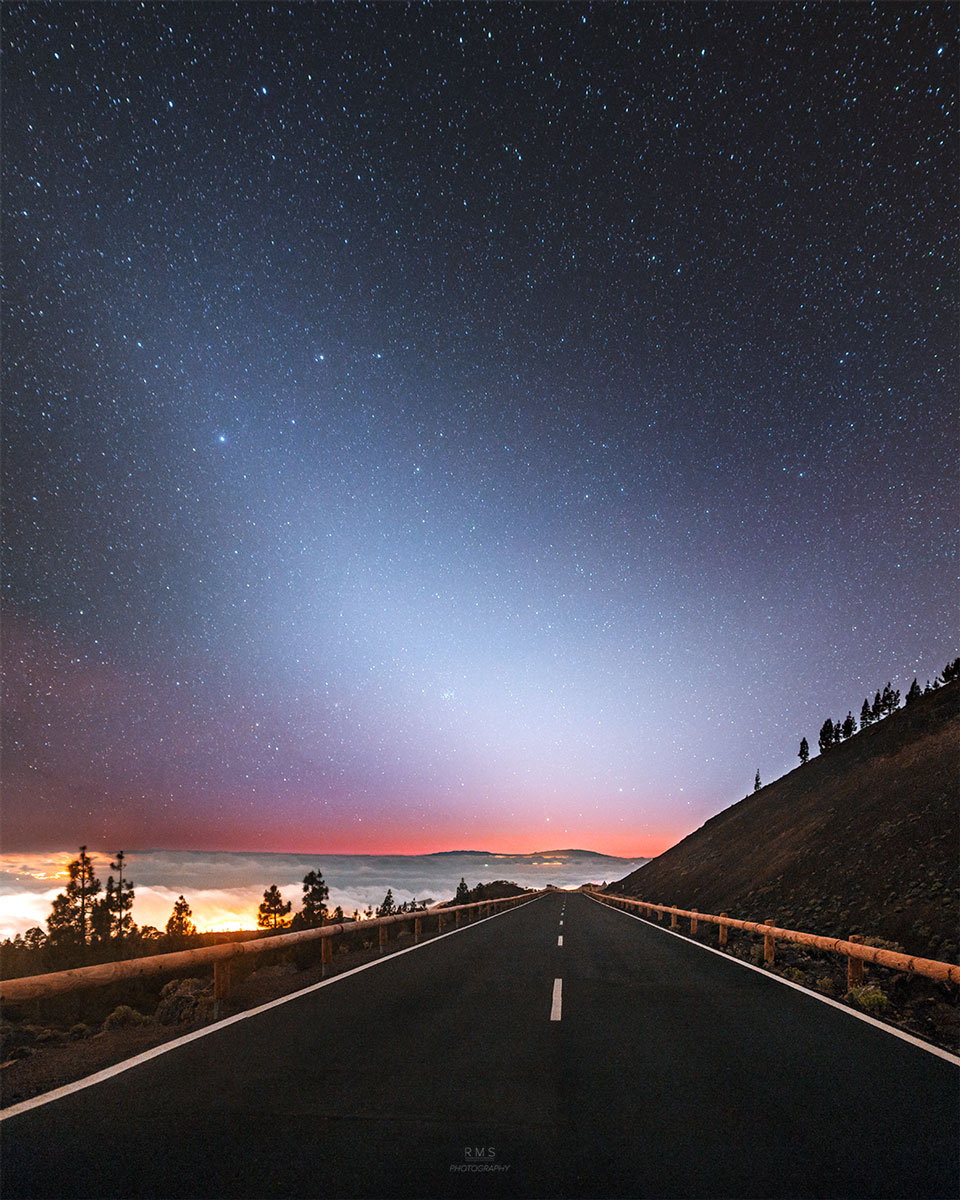公路尽头的黄道光
2019 July 24
Zodiacal Road
Image Credit & Copyright: Ruslan Merzlyakov (RMS Photography)
Explanation: What’s that strange light down the road? Dust orbiting the Sun. At certain times of the year, a band of sun-reflecting dust from the inner Solar System appears prominently just after sunset — or just before sunrise — and is called zodiacal light. Although the origin of this dust is still being researched, a leading hypothesis holds that zodiacal dust originates mostly from faint Jupiter-family comets and slowly spirals into the Sun. Recent analysis of dust emitted by Comet 67P, visited by ESA’s robotic Rosetta spacecraft, bolster this hypothesis. Pictured when climbing a road up to Teide National Park in the Canary Islands of Spain, a bright triangle of zodiacal light appeared in the distance soon after sunset. Captured on June 21, the scene includes bright Regulus, alpha star of Leo, standing above center toward the left. The Beehive Star Cluster (M44) can be spotted below center, closer to the horizon and also immersed in the zodiacal glow.
公路尽头的黄道光
影像来源及版权: Ruslan Merzlyakov (RMS Photography)
说明:沿着公路望去,那道奇怪的光线是什么?是环绕太阳的尘埃。在一年中的某些时候,来自内太阳系的尘埃反射阳光而形成的光带会显著地出现在日落后或日出前,它被称为黄道光。尽管这种尘埃的起源仍在研究中,但是一则主要的假说认为黄道尘埃主要来源于黯淡的木族彗星,并缓慢地盘旋进入太阳。最近,欧洲航天局的罗塞塔号宇宙飞船对67P彗星排放的尘埃所进行的分析支持了这一假设。这幅影像拍摄于西班牙加那利群岛上的泰德国家公园中的一条公路上,日落后不久,远处出现了一道明亮的三角形黄道光。这幅摄于6月21日的景象呈现了位于中央偏左位置的亮星轩辕十四(狮子座的阿尔法星)。蜂巢星团(M44)位于影像中心下方,靠近地平线,也沉浸在黄道带的光芒中。

